1. Early Life and Background
John Muir's early life in Scotland and his subsequent immigration to America laid the foundation for his deep connection to nature and his later advocacy for wilderness preservation. His formative years were marked by a strict religious upbringing and an innate curiosity that led him to explore the natural world around him.
1.1. Boyhood in Scotland
John Muir was born in Dunbar, Scotland, on April 21, 1838, in a three-story stone building that is now preserved as a museum, John Muir's Birthplace. He was the third of eight children born to Daniel Muir and Ann Gilrye. His siblings included Margaret, Sarah, David, Daniel, Ann, Mary, and Joanna (who was born in America). Muir's earliest memories, as recounted in his autobiography, were of short walks with his grandfather when he was three years old.
His boyhood pursuits included re-enacting romantic battles from the Wars of Scottish Independence and wrestling on the playground. He also engaged in competitive bird nest hunting with his peers. Author Amy Marquis suggests that Muir's "love affair" with nature began early, possibly as a reaction to his strict religious upbringing. His father believed that anything distracting from Bible studies was frivolous and punishable, leading the young Muir, a "restless spirit," to be "prone to lashings." Despite the strictures, Muir became fascinated with the East Lothian landscape, spending considerable time wandering the local coastline and countryside. This period sparked his interest in natural history and the works of Scottish naturalist Alexander Wilson.
Although he spent the majority of his life in America, Muir never forgot his Scottish roots. He maintained a strong connection with his birthplace and Scottish identity, often speaking about his childhood amid the East Lothian countryside. He greatly admired the works of Thomas Carlyle and the poetry of Robert Burns, even carrying a collection of Burns' poems during his travels through the American wilderness. He returned to Scotland for a trip in 1893, where he met one of his Dunbar schoolmates and revisited the places of his youth that were etched in his memory. Having emigrated at the age of 11, he never lost his Scottish accent.
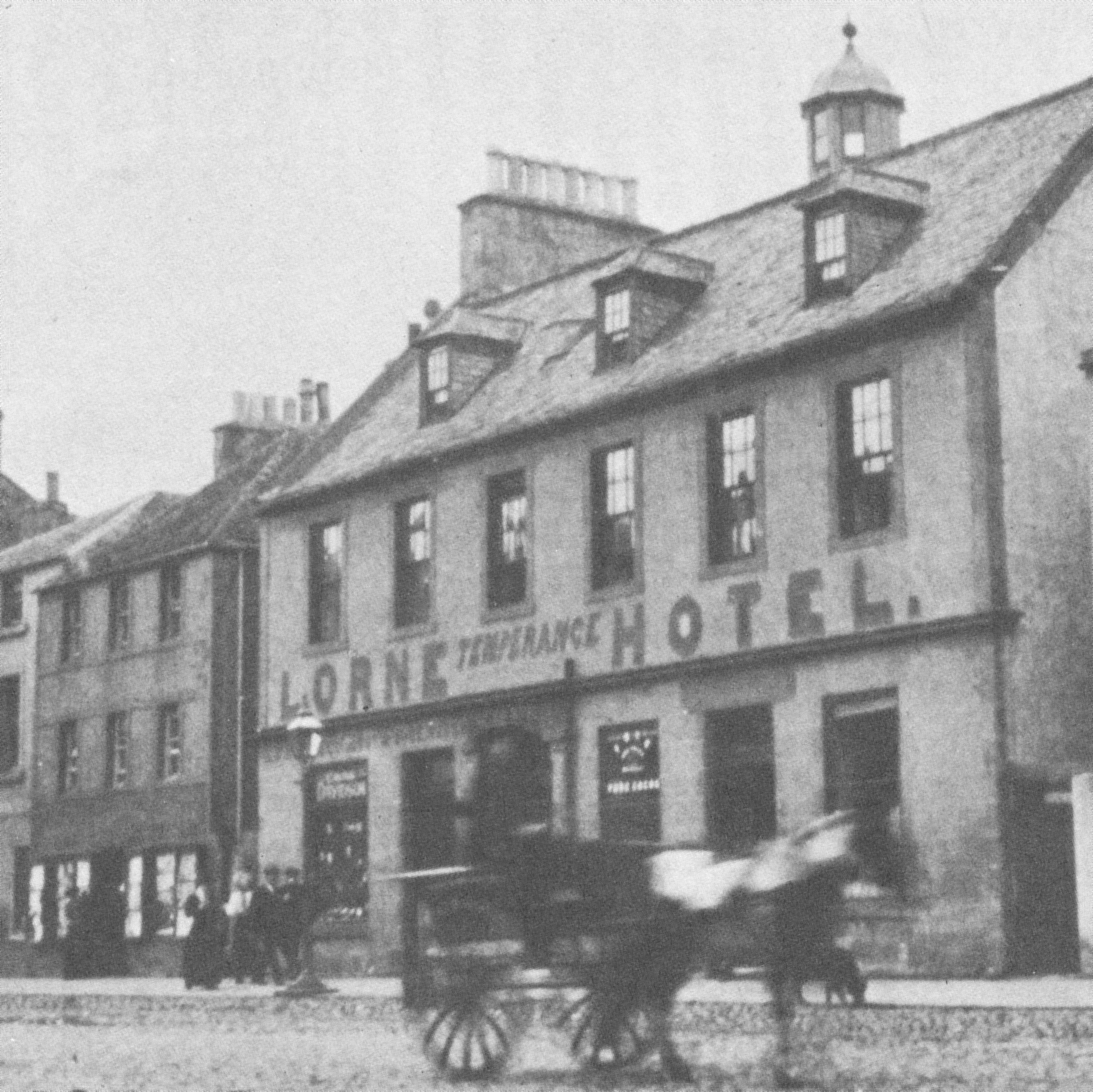
1.2. Immigration to America
In 1849, Muir's family immigrated to the United States, establishing a farm near Portage, Wisconsin, which they named Fountain Lake Farm. This site has since been designated a National Historic Landmark. According to Stephen Fox, Muir's father found the Church of Scotland insufficiently strict in its faith and practice, which prompted their emigration and subsequent joining of a congregation within the Campbellite Restoration Movement, specifically the Disciples of Christ. By the age of 11, young Muir had committed to memory "by heart and by sore flesh" the entirety of the New Testament and the majority of the Old Testament.
As an adult, while remaining a deeply spiritual individual, Muir's orthodox beliefs evolved. He noted, "I never tried to abandon creeds or code of civilization; they went away of their own accord... without leaving any consciousness of loss." In other writings, he described the conventional image of a Creator as "as purely a manufactured article as any puppet of a half-penny theater."
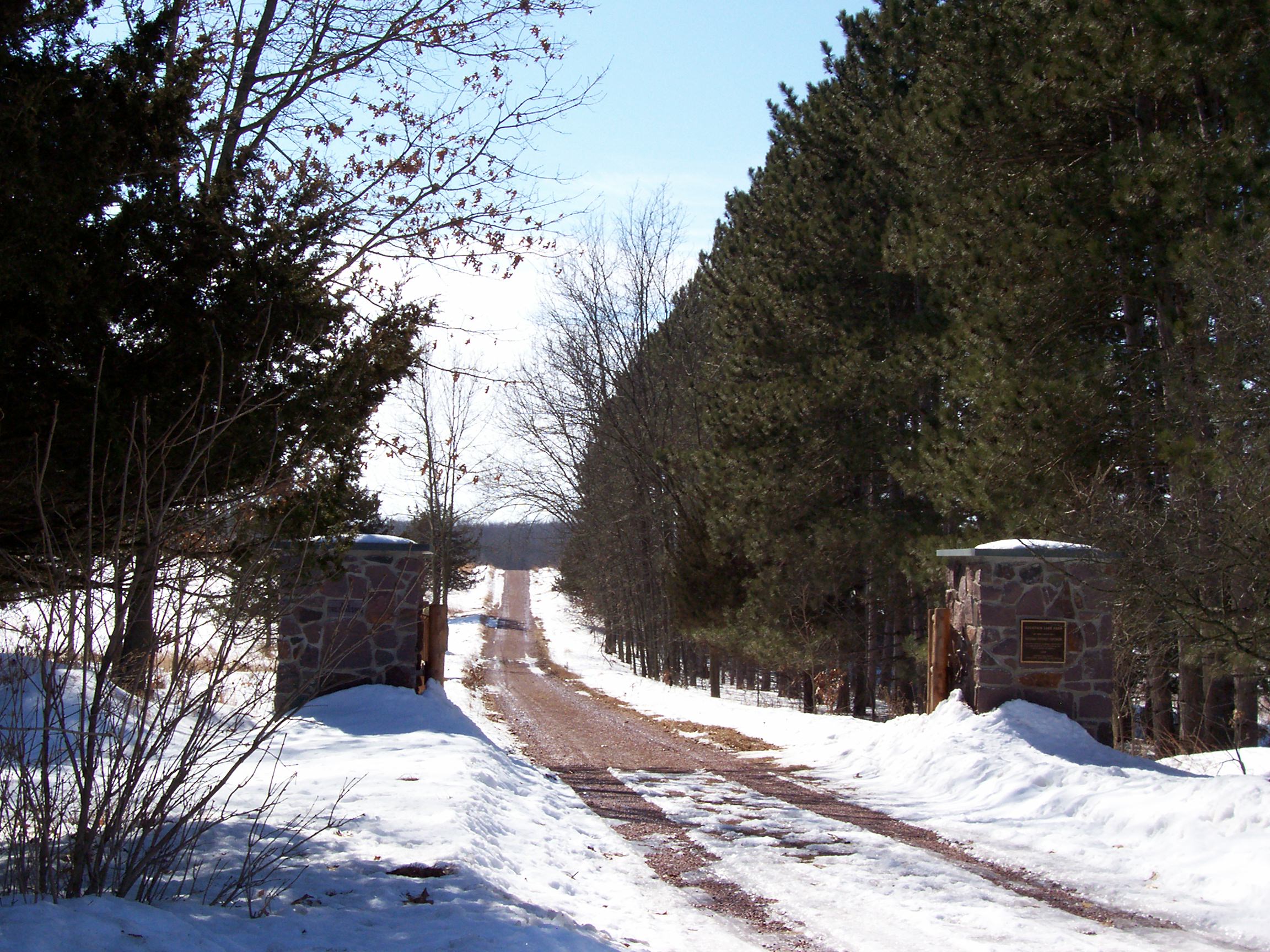
1.3. Education and Early Explorations
At the age of 22, John Muir enrolled at the University of Wisconsin-Madison, funding his education for several years. It was there, beneath a towering black locust tree beside North Hall, that Muir received his first botany lesson. A fellow student plucked a flower from the tree, explaining how the grand locust belonged to the pea family, related to the seemingly insignificant pea plant. Fifty years later, Muir recounted this day in his autobiography, stating, "This fine lesson charmed me and sent me flying to the woods and meadows in wild enthusiasm."
As a freshman, Muir studied chemistry under Professor Ezra Carr and his wife Jeanne. They became lifelong friends, and Muir developed a lasting interest in chemistry and the sciences. Muir's approach to his studies was eclectic; he attended classes for two years but was never listed beyond a first-year student due to his unconventional course selections. University records noted his status as "irregular gent," and despite never graduating, he acquired sufficient knowledge in geology and botany to inform his later extensive wanderings.
In 1863, Muir's brother Daniel left Wisconsin and moved to Southern Ontario (then known as Canada West in the United Canadas), seeking to avoid the draft during the US Civil War. Muir followed him to the same region in 1864, spending the spring, summer, and fall exploring the woods and swamps and collecting plants around the southern reaches of Lake Huron's Georgian Bay. He hiked along the Niagara Escarpment, including much of today's Bruce Trail. As his funds dwindled and winter approached, he reunited with his brother Daniel near Meaford, Ontario, who convinced him to work at the sawmill and rake factory owned by William Trout and Charles Jay. Muir resided with the Trout family in an area called Trout Hollow, south of Meaford, on the Bighead River. While there, he continued his "botanizing," exploring the escarpment and bogs, and meticulously collecting and cataloging plants. He worked at the mill/factory until after a fire destroyed it in February 1866.
In March 1866, Muir returned to the United States, settling in Indianapolis to work in a wagon wheel factory. He proved invaluable to his employers due to his inventiveness in improving machines and processes, leading to his promotion to supervisor with a weekly wage of 25 USD. In early March 1867, an accident dramatically altered the course of his life: a tool he was using slipped and struck him in the eye, cutting the cornea of his right eye, which then caused his left eye to sympathetically fail. He was confined to a darkened room for six weeks, anxious about the possibility of permanent blindness. Upon regaining his sight, Muir felt he "saw the world-and his purpose-in a new light." He later wrote, "This affliction has driven me to the sweet fields. God has to nearly kill us sometimes, to teach us lessons." From that moment, he resolved to "be true to [himself]" and pursue his dream of exploring and studying plants.
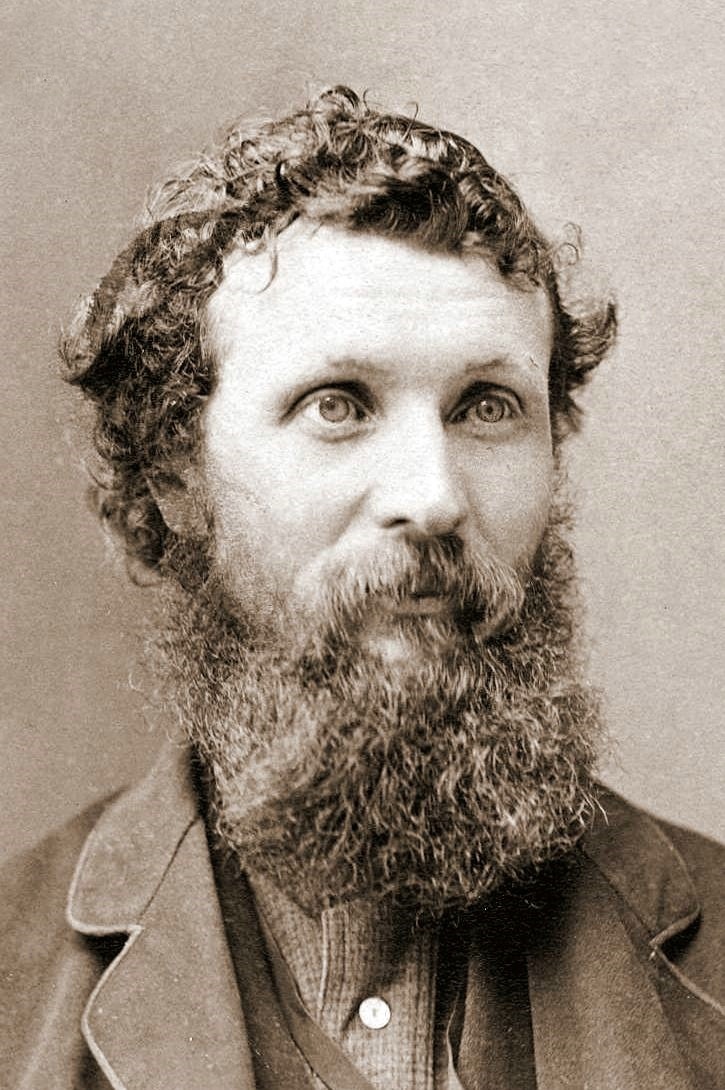
In September 1867, Muir embarked on a walk of approximately 1.00 K mile from Kentucky to Florida, an experience he chronicled in his book A Thousand-Mile Walk to the Gulf. He had no specific route planned, opting instead for the "wildest, leafiest, and least trodden way I could find." Upon arriving at Cedar Key, he began working for Richard Hodgson at his sawmill. However, just three days into the job, Muir nearly died from a malarial illness. After spending three months in a frequently delirious state, his condition improved enough for him to move around the Hodgson house and look outside. Muir later stated that he "doubtless owe my life" to the Hodgsons for their unwavering kindness in caring for him.
One evening in early January 1868, Muir climbed onto the Hodgson house roof to watch the sunset. He spotted a ship, the Island Belle, and learned it was soon sailing for Cuba. Muir boarded the ship, and while in Havana, he spent his time studying shells and flowers and visiting the city's botanical garden. Afterwards, he sailed to New York City and then booked passage to California. In 1878, Muir served as a guide and artist for the United States Coast and Geodetic Survey during the survey of the 39th parallel across the Great Basin of Nevada and Utah.
2. Explorer of Nature
John Muir's life was largely defined by his extensive travels and profound engagement with the natural landscapes of North America. His explorations, particularly in California and Alaska, were marked by keen scientific observation and an unparalleled appreciation for the wilderness.
2.1. California and Yosemite
Muir's arrival in California marked the beginning of his deep connection with the state's natural wonders, especially Yosemite Valley, which became central to his life's work.
2.1.1. Experiencing Yosemite
After finally settling in San Francisco, Muir immediately embarked on a week-long visit to Yosemite, a place he had only read about. Upon seeing it for the first time, Muir was "overwhelmed by the landscape, scrambling down steep cliff faces to get a closer look at the waterfalls, whooping and howling at the vistas, jumping tirelessly from flower to flower." He later returned to Yosemite and worked as a shepherd for a season, during which he climbed several mountains, including Cathedral Peak and Mount Dana, and hiked an old trail down Bloody Canyon to Mono Lake.
Muir constructed a small cabin along Yosemite Creek, designing it so that a section of the stream flowed through a corner of the room, allowing him to enjoy the soothing sound of running water. He resided in this cabin for two years and documented this period in his book First Summer in the Sierra (1911). Frederick Turner, Muir's biographer, notes that Muir's journal entry upon his initial visit to the valley "blazes from the page with the authentic force of a conversion experience."
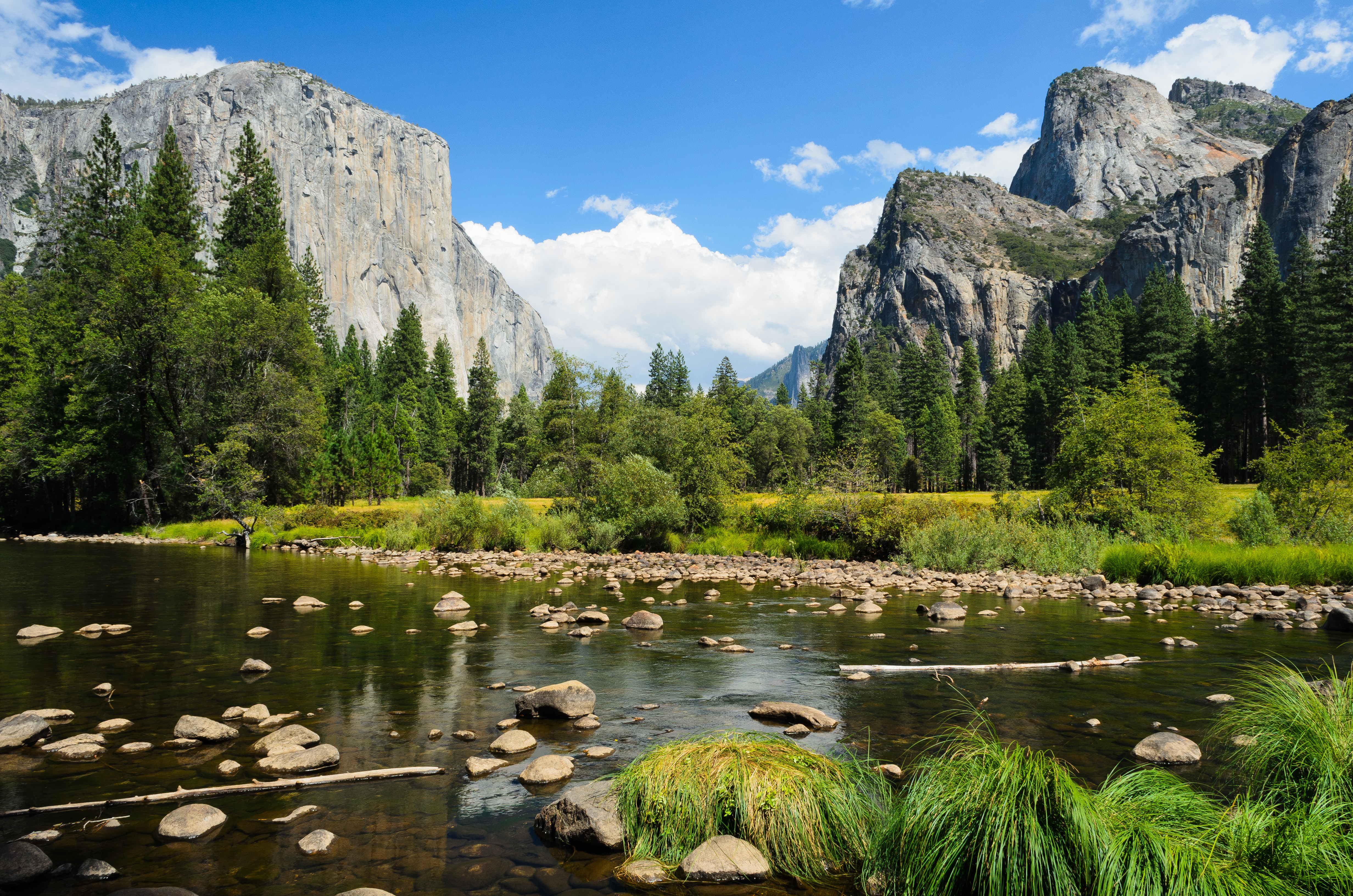
2.1.2. Geological studies and theories
The pursuit of his love for science, particularly geology, frequently occupied Muir's free time. He soon became convinced that glaciers had sculpted many of the distinctive features of the Yosemite Valley and its surrounding area. This idea stood in strong contradiction to the prevailing contemporary theory, championed by Josiah Whitney, the head of the California Geological Survey, who attributed the valley's formation to a catastrophic earthquake. As Muir's ideas gained traction, Whitney attempted to discredit him by labeling him as a mere amateur. However, Louis Agassiz, the foremost geologist of the era, recognized the merit in Muir's theories and praised him as "the first man I have ever found who has any adequate conception of glacial action."
In 1871, Muir's discovery of an active alpine glacier below Merced Peak further bolstered his theories, helping them gain wider acceptance. A significant earthquake centered near Lone Pine in Owens Valley strongly shook the occupants of Yosemite Valley in March 1872. The quake awoke Muir in the early morning, and he rushed out of his cabin "both glad and frightened," exclaiming, "A noble earthquake!" Other valley settlers, who adhered to Whitney's ideas, feared that the quake was a prelude to a cataclysmic deepening of the valley. Muir, however, harbored no such fear and promptly conducted a moonlit survey of new talus piles created by the earthquake-triggered rockslides. This event contributed to more people believing in Muir's ideas about the valley's formation.
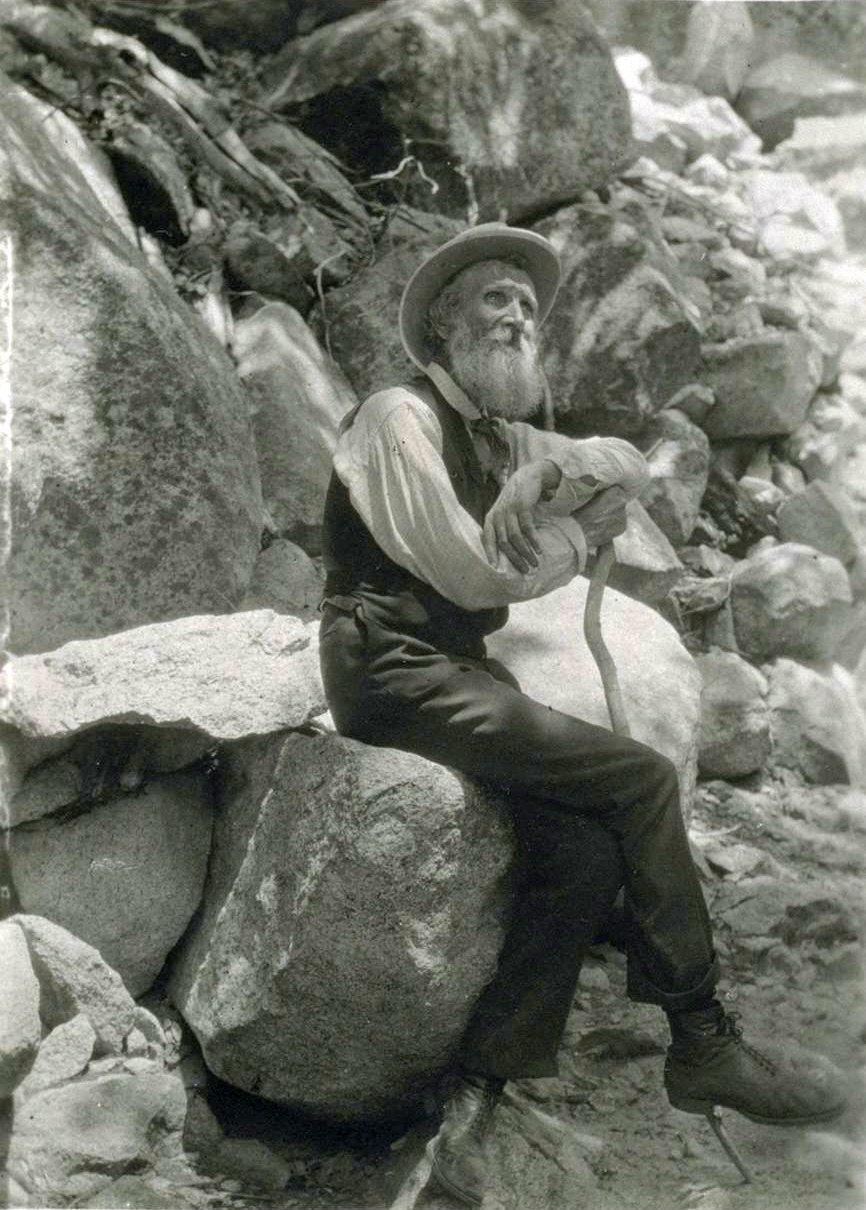
2.1.3. Botanical studies
In addition to his geological studies, Muir also extensively investigated the plant life of the Yosemite area. In 1873 and 1874, he conducted detailed field studies along the western flank of the Sierra Nevada, focusing on the distribution and ecology of isolated groves of Giant Sequoia. In 1876, the American Association for the Advancement of Science published Muir's significant paper on this subject, titled "On the Post-glacial History of Sequoia Gigantea."
2.1.4. Friendships
During his years in Yosemite, Muir was unmarried, frequently unemployed, and lacked clear career prospects, experiencing "periods of anguish." He found sustenance in the natural environment and through reading the essays of naturalist author Ralph Waldo Emerson, whose writings resonated deeply with the life Muir was then living. On his excursions into the Yosemite backcountry, he traveled alone, carrying "only a tin cup, a handful of tea, a loaf of bread, and a copy of Emerson." He often spent his evenings by a campfire, wrapped in his overcoat, reading Emerson under the stars. Over time, he became a "fixture in the valley," renowned for his knowledge of natural history, his skill as a guide, and his vivid storytelling. Visitors to the valley, including scientists, artists, and celebrities, frequently made a point of meeting with Muir.
Muir's friendship with Jeanne Carr had a lifelong influence on his career as a naturalist and writer. They first met in the fall of 1860, when Muir, then 22, entered several of his homemade inventions in the Wisconsin State Agricultural Society Fair. Carr, a fair assistant, was asked to review Muir's exhibits and found them to have merit, recognizing "evidence of genius worthy of special recognition." As a result, Muir received a diploma and a monetary award for his handmade clocks and thermometer. Over the next three years, while a student at the University of Wisconsin, he was befriended by Jeanne and her husband, Ezra, a professor at the same university. According to Muir biographer Bonnie Johanna Gisel, the Carrs recognized his "pure mind, unsophisticated nature, inherent curiosity, scholarly acumen, and independent thought." Jeanne Carr, 35 at the time, particularly valued his youthful individuality and his acceptance of "religious truths" similar to her own.
Muir was a frequent guest at the Carrs' home, sharing Jeanne's passion for plants. In 1864, when he left Wisconsin to explore the Canadian wilderness, he began corresponding with her about his activities. Carr, in turn, wrote back, encouraging his explorations and writings, eventually becoming a significant influence on his personal goals. At one point, she urged Muir to read Lamartine's The Stonemason of Saint Point, a story she believed would shape his thinking. Gisel notes that the story, about a "poor man with a pure heart" who found "divine lessons" in nature and saw all of God's creatures as interconnected, was a "projection of the life she envisioned for him."
After Muir returned to the United States, he spent the next four years exploring Yosemite and simultaneously writing articles for publication. During these years, Muir and Carr continued their correspondence. She often directed her friends to Yosemite to meet Muir and "to hear him preach the gospel of the mountains." The most notable of these visitors was Ralph Waldo Emerson. Gisel emphasizes that the importance of Carr, who consistently provided Muir with reassurance and inspiration, "cannot be overestimated," adding that it was "through his letters to her that he developed a voice and purpose." She also attempted to promote Muir's writings by submitting his letters to a monthly magazine for publication. Muir came to trust Carr as his "spiritual mother," and their friendship endured for 30 years. In one letter, while Muir was living in Yosemite, she sought to prevent him from despairing about his life's purpose.
The significance of their friendship was first revealed by G. Wharton James, a clergyman and writer and a friend of Carr's. After obtaining copies of their private letters from Carr, and despite Muir's pleas for their return, James published articles about their friendship, using the letters as a primary source. In one such article, he highlighted Muir's debt to Carr, stating that she was his "guiding star" who "led him into the noble paths of life, and then kept him there."
Muir also maintained a close friendship for 38 years with William Keith, a California landscape painter. Both were born in Scotland in the same year and shared a deep love for the mountains of California.
In 1871, after Muir had lived in Yosemite for three years, Emerson, accompanied by several friends and family, arrived in Yosemite during a tour of the Western United States. The two men met, and according to Tallmadge, "Emerson was delighted to find at the end of his career the prophet-naturalist he had called for so long ago... And for Muir, Emerson's visit came like a laying on of hands." Emerson spent a day with Muir and offered him a teaching position at Harvard, which Muir declined. Muir later wrote, "I never for a moment thought of giving up God's big show for a mere profship!" Muir also spent time with photographer Carleton Watkins and studied his photographs of Yosemite.
John Charles Van Dyke, an author and Professor of Art at Rutgers College (now Rutgers, State University of New Jersey), and his nephew Dix Strong Van Dyke, also an author, who wrote Daggett: Life in a Mojave Frontier Town, had many conversations with Muir at the Dix ranch in Daggett, California. This interaction likely influenced Muir's writings. His daughter Helen later married Frank Buel and lived in Daggett.
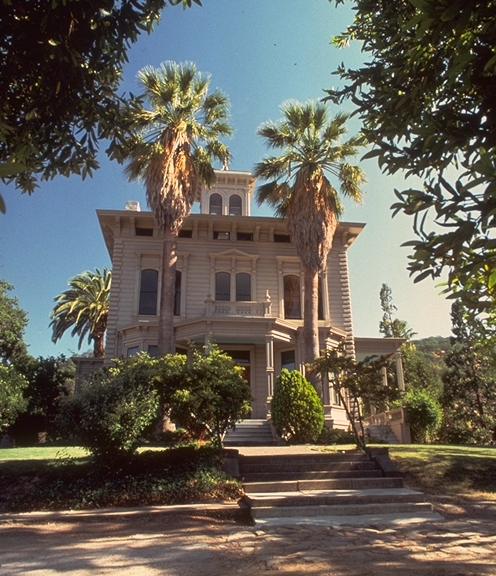
2.2. Pacific Northwest and Alaska
Muir's explorations extended beyond California to the vast wildernesses of the Pacific Northwest and Alaska, where he encountered glaciers and unique ecosystems.
2.2.1. Alaska explorations
Between 1879 and 1899, Muir undertook seven trips to Alaska, reaching as far as Unalaska and Barrow. In 1879, Muir, along with Mr. Young, a missionary from Fort Wrangell, and a group of Native American guides, became the first Euro-Americans to explore Glacier Bay. Muir Glacier was later named in his honor. He also traveled into British Columbia, venturing a third of the way up the Stikine River, describing its Grand Canyon as "a Yosemite that was a hundred miles long." Along the river's course, Muir recorded over 300 glaciers.
He returned for further explorations in southeast Alaska in 1880, and in 1881, he was part of the expedition that landed on Wrangel Island aboard the USS Corwin and claimed the island for the United States. Muir documented this experience in his journal entries and newspaper articles, which were later compiled and edited into his book The Cruise of the Corwin. In 1888, after seven years of managing the Strentzel fruit ranch in Alhambra Valley, California, his health began to decline. To recover, he returned to the mountains, climbing Mount Rainier in Washington and subsequently writing Ascent of Mount Rainier.
3. Activism
John Muir dedicated a significant portion of his life to protecting wilderness areas, playing a pivotal role in the establishment of national parks and advocating tirelessly for conservation.
3.1. Preservation efforts
Muir passionately embraced his role as a preservationist, envisioning the Yosemite area and the Sierra Nevada as pristine and untouched lands. He believed the greatest threat to these regions came from domesticated livestock, particularly domestic sheep, which he famously referred to as "hoofed locusts."
3.1.1. Establishing Yosemite National Park
In June 1889, Robert Underwood Johnson, the influential associate editor of The Century Magazine, camped with Muir in Tuolumne Meadows and witnessed firsthand the extensive damage a large flock of sheep had inflicted upon the grassland. Moved by what he saw, Johnson agreed to publish any article Muir wrote on the subject of excluding livestock from the Sierra high country. He also committed to using his influence to introduce a bill in Congress to designate the Yosemite area as a national park, modeled after Yellowstone National Park.
On September 30, 1890, the US Congress passed a bill that largely incorporated the recommendations Muir had put forth in two influential Century articles, "The Treasures of the Yosemite" and "Features of the Proposed National Park," both published that same year. However, to Muir's dismay, the bill stipulated that Yosemite Valley would remain under state control, as it had been since the 1860s.
3.2. Co-founding the Sierra Club
In early 1892, Professor Henry Senger, a philologist at the University of California, Berkeley, contacted Muir with the idea of forming a local 'alpine club' for mountain enthusiasts. Senger and San Francisco attorney Warren Olney subsequently sent out invitations for a meeting "for the purpose of forming a 'Sierra Club'. Mr. John Muir will preside." The inaugural meeting of the Sierra Club was held on May 28, 1892, to draft articles of incorporation. One week later, Muir was elected the club's first president, a position he held until his death 22 years later. Warren Olney was elected vice-president, and the initial board of directors included David Starr Jordan, then president of the newly established Stanford University.
The Sierra Club immediately took a stand against efforts to reduce the size of Yosemite National Park by half and began organizing educational and scientific meetings. At a meeting in the fall of 1895, attended by Muir, Joseph LeConte, and William R. Dudley, the Sierra Club discussed the concept of establishing 'national forest reservations,' which would later become known as National Forests. The Sierra Club played an active role in the successful campaign to transfer Yosemite National Park from state to federal control in 1906. The organization also championed the fight to preserve Hetch Hetchy Valley, despite some prominent San Francisco members initially opposing the battle. Ultimately, a vote was held that overwhelmingly solidified the Sierra Club's opposition to the Hetch Hetchy Dam project.
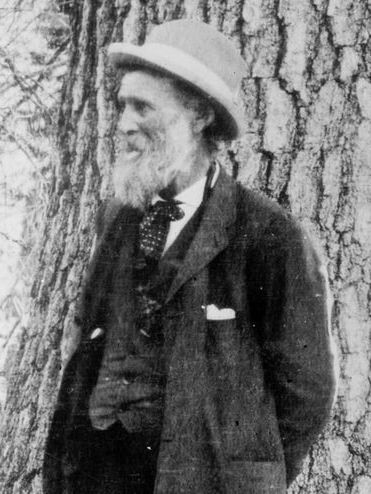
3.3. Preservation vs conservation
In July 1896, Muir became acquainted with Gifford Pinchot, a leading figure in the national conservation movement and the first head of the United States Forest Service. Pinchot was a prominent advocate for the sustainable use of natural resources for the benefit of the people. His views eventually diverged from Muir's, highlighting two distinct philosophies regarding the management of the nation's natural resources. Pinchot viewed conservation as a means of managing resources for long-term sustainable commercial use, asserting that "forestry is tree farming" without destroying the long-term viability of forests. Muir, conversely, valued nature for its profound spiritual and transcendental qualities, often referring to national parks as "places for rest, inspiration, and prayers." He consistently encouraged city dwellers to seek spiritual nourishment in nature. While both men opposed the reckless exploitation of natural resources, including the clear-cutting of forests, and even Muir acknowledged the necessity of timber, Pinchot's approach to wilderness management was fundamentally more resource-oriented.
Their friendship ended in late summer 1897 when Pinchot publicly supported sheep grazing in forest reserves in a statement to a Seattle newspaper. Muir confronted Pinchot, demanding an explanation. When Pinchot reiterated his stance, Muir declared, "I don't want any thing more to do with you." This philosophical divide soon expanded, splitting the broader conservation movement into two distinct camps: the "preservationists," led by Muir, and Pinchot's camp, which adopted the term "conservation." The two men debated their contrasting positions in popular magazines such as Outlook, Harper's Weekly, Atlantic Monthly, World's Work, and Century. Their differing views were starkly highlighted again during the national debate over whether to dam Hetch Hetchy Valley. Pinchot advocated for damming the valley as "the highest possible use which could be made of it," while Muir famously proclaimed, "Dam Hetch Hetchy! As well dam for water-tanks the people's cathedrals and churches, for no holier temple has ever been consecrated by the hearts of man."

3.4. Relationship with Theodore Roosevelt
In 1899, Muir participated in the renowned exploratory voyage along the Alaska coast, accompanying railroad executive E. H. Harriman and esteemed scientists aboard the luxuriously refitted 250 ft steamer, the George W. Elder. He later leveraged his friendship with Harriman to lobby Congress for the passage of conservation legislation.
A pivotal moment in American conservation occurred in 1903, when President Theodore Roosevelt visited Yosemite accompanied by Muir. Muir joined Roosevelt in Oakland, California, for the train journey to Raymond. The presidential entourage then proceeded by stagecoach into the park. During their travel to the park, Muir informed the president about the state's mismanagement of the valley and the rampant exploitation of its resources. Even before they officially entered the park, Muir successfully convinced Roosevelt that federal control and management offered the best means of protecting the valley.
After entering the park and witnessing the magnificent splendor of the valley, the president asked Muir to show him the "real Yosemite." Muir and Roosevelt ventured largely by themselves, camping in the backcountry. The duo conversed late into the night, slept in the crisp open air of Glacier Point, and awoke to a dusting of fresh snowfall in the morning. It was an experience Roosevelt never forgot. He later told a crowd, "Lying out at night under those giant Sequoias was like lying in a temple built by no hand of man, a temple grander than any human architect could by any possibility build." Muir, too, cherished the camping trip, writing, "Camping with the President was a remarkable experience... I fairly fell in love with him."
Following this influential trip, Muir intensified the efforts of the Sierra Club to consolidate park management. In 1906, Congress responded by transferring the Mariposa Grove and Yosemite Valley to the park's federal jurisdiction.
3.5. Hetch Hetchy Dam controversy
As the population of San Francisco continued to grow, political pressure mounted to dam the Tuolumne River to create a water reservoir. John Muir passionately opposed the damming of Hetch Hetchy Valley, considering it to be as stunning as Yosemite Valley itself. Muir, along with the Sierra Club and Robert Underwood Johnson, vigorously fought against the inundation of the valley. Muir wrote to President Roosevelt, pleading with him to halt the project. Roosevelt's successor, William Howard Taft, temporarily suspended the Interior Department's approval for the Hetch Hetchy right-of-way. However, after years of national debate, Taft's successor, Woodrow Wilson, signed the bill authorizing the dam into law on December 19, 1913. Muir felt a profound sense of loss from the destruction of the valley, which marked his last major battle. He conveyed his despair to his friend Vernon Kellogg, writing, "As to the loss of the Sierra Park Valley [Hetch Hetchy] it's hard to bear. The destruction of the charming groves and gardens, the finest in all California, goes to my heart."
4. Nature Writer and Philosopher
John Muir's prolific writing career was central to his advocacy, conveying his profound philosophical and spiritual engagement with nature to a wide audience.
4.1. Major Writings
During his lifetime, John Muir published six volumes of writings, all of which described his explorations of natural settings. Four additional books were published posthumously, and several subsequent collections compiled his essays and articles from various sources. According to Miller, the most significant aspect of Muir's writings was not their quantity, but their "quality." He notes that they had a "lasting effect on American culture in helping to create the desire and will to protect and preserve wild and natural environments."
Muir's first appearance in print occurred by accident. A person unknown to him submitted, without his permission or awareness, a personal letter he had written to his friend Jeanne Carr, describing Calypso borealis, a rare flower he had encountered. The piece was published anonymously, identified only as having been written by an "inspired pilgrim." Throughout his many years as a nature writer, Muir frequently rewrote and expanded upon earlier writings from his journals, as well as articles previously published in magazines. He often compiled and organized these earlier writings as collections of essays or integrated them into narrative books.
Zoologist Henry Fairfield Osborn, a friend of Muir's, noted that Muir's writing style did not come easily but required intense effort. Osborn observed that Muir "Daily he rose at 4:30 o'clock, and after a simple cup of coffee labored incessantly... he groans over his labors, he writes and rewrites and interpolates." Muir preferred using the simplest English language, and therefore admired above all the writings of Carlyle, Emerson, and Thoreau. Osborn added, "He is a very firm believer in Thoreau and starts by reading deeply of this author." Muir's secretary, Marion Randall Parsons, also noted that "composition was always slow and laborious for him... Each sentence, each phrase, each word, underwent his critical scrutiny, not once but twenty times before he was satisfied to let it stand." Muir often told her, "This business of writing books is a long, tiresome, endless job."
Miller speculates that Muir partly recycled his earlier writings due to his "dislike of the writing process," finding it "difficult and tedious." He was generally unsatisfied with the finished result, perceiving prose as "a weak instrument for the reality he wished to convey." Nevertheless, he was encouraged by friends and his wife to continue writing, and as a result of their influence, he persisted, though never fully satisfied. Muir famously wrote in 1872, "No amount of word-making will ever make a single soul to 'know' these mountains. One day's exposure to mountains is better than a cartload of books." In one of his essays, he provided an example of the deficiencies of writing compared to directly experiencing nature.
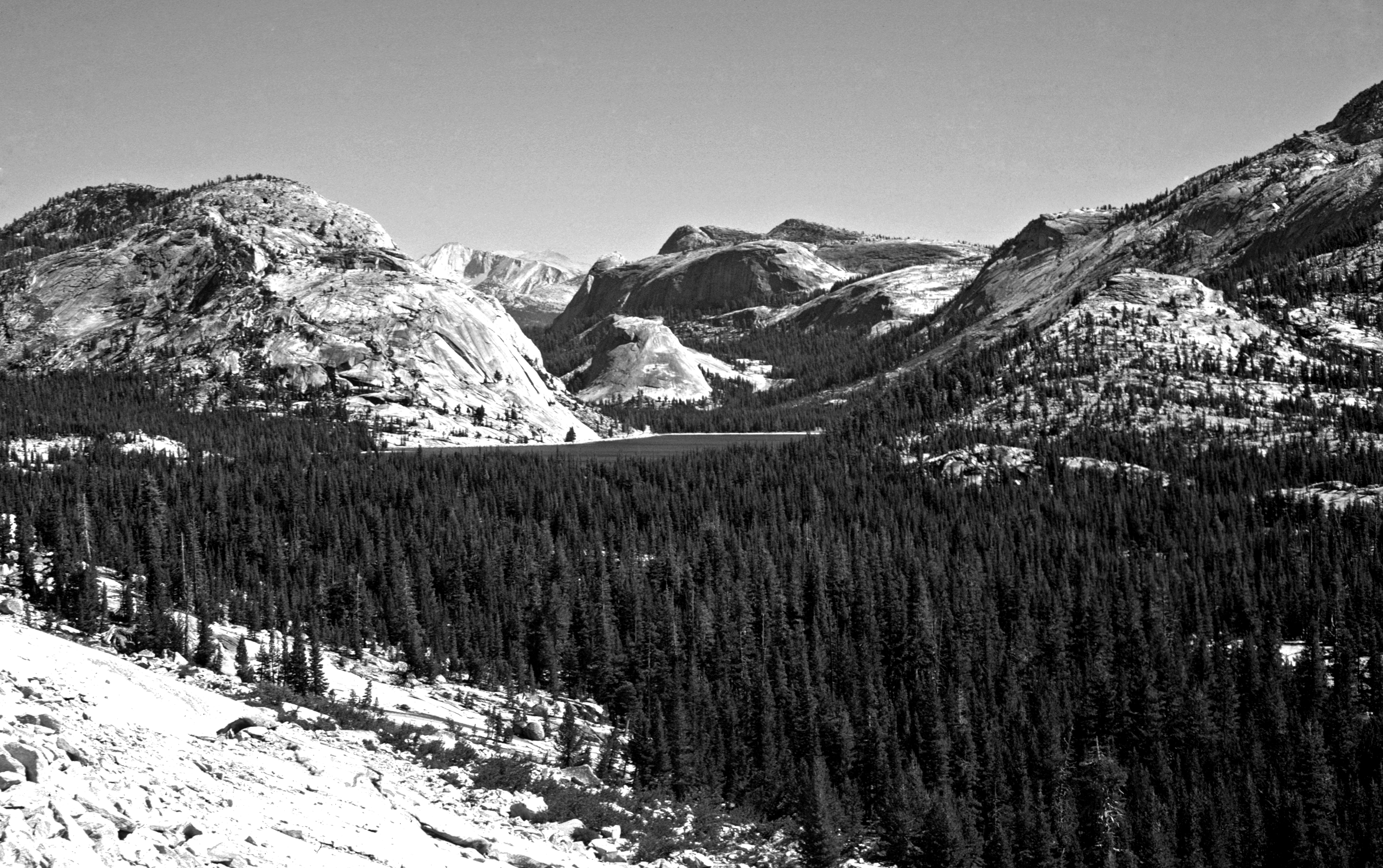
4.2. Philosophical Beliefs
John Muir's philosophical beliefs were deeply intertwined with his understanding of nature, which he viewed through a spiritual and theological lens, emphasizing sensory perception and the concept of nature as a true home.
4.2.1. Nature and theology
Muir believed that to discover truth, he had to turn to what he considered the most accurate sources. In his book, The Story of My Boyhood and Youth (1913), he recounted that during his childhood, his father required him to read the Bible daily, leading him to memorize three-quarters of the Old Testament and all of the New Testament. Muir's father also read Josephus's War of the Jews to understand the culture of first-century Judea, as it was written by an eyewitness and illuminated the cultural context of the New Testament period. However, as Muir became deeply connected to the American natural landscapes he explored, he began to perceive another "primary source for understanding God: the Book of Nature." According to Denis C. Williams, in nature, especially in the wilderness, Muir was able to study plants and animals in an environment that he believed "came straight from the hand of God, uncorrupted by civilization and domestication." As John Tallmadge notes, Muir's belief in this "Book of Nature" compelled him to narrate the story of "this creation in words any reader could understand," making his writings "prophecy, for [they] sought to change our angle of vision."
Williams further observes that Muir's philosophy and worldview revolved around his perceived dichotomy between civilization and nature, from which developed his core belief that "wild is superior." His nature writings became a "synthesis of natural theology" with scripture, helping him comprehend the origins of the natural world. Philosophers and theologians such as Thomas Dick suggested that the "best place to discover the true attributes of deity was in Nature." Muir came to believe that God was perpetually active in the creation of life, thereby maintaining the natural order of the world. As a result, Williams adds, Muir "styled himself as a John the Baptist" whose duty was to immerse "everyone he could" in 'mountain baptism.' Williams concludes that Muir viewed nature as a profound teacher, "revealing the mind of God," and this conviction became the central theme of his later journeys and the "subtext" of his nature writing.
Throughout his career as a writer and during his time living in the mountains, Muir continued to experience the "presence of the divine in nature." His personal letters also conveyed these feelings of ecstasy. Historian Catherine Albanese remarked that in one of his letters, "Muir's eucharist made Thoreau's feast on wood-chuck and huckleberry seem almost anemic." Muir was exceptionally fond of Thoreau and was likely influenced more by him than even Emerson, often referring to himself as a "disciple" of Thoreau.
4.2.2. Sensory perceptions and light
During his first summer in the Sierra Nevada as a shepherd, Muir's field notes emphasized the critical role that the senses play in human perceptions of the environment. According to Williams, Muir speculated that the world was an unchanging entity interpreted by the brain through the senses, and, as Muir wrote, "If the creator were to bestow a new set of senses upon us... we would never doubt that we were in another world..." While conducting his studies of nature, he meticulously attempted to remember everything he observed, as if his senses were recording the impressions, until he could transcribe them into his journal. This intense desire to recall facts led him to fill his field journals with detailed notes on precipitation, temperature, and even cloud formations.
However, Muir's journal entries went beyond mere factual observations. Williams notes that his recorded observations amounted to a description of "the sublimity of Nature," forming what was essentially "an aesthetic and spiritual notebook." Muir felt that his task was more than simply documenting "phenomena"; it was also to "illuminate the spiritual implications of those phenomena." For Muir, mountain skies, for instance, appeared painted with light and came to "... symbolize divinity." He frequently described his observations in terms of light.
Muir biographer Steven Holmes points out that Muir used words like "glory" and "glorious" to suggest that light was taking on a religious dimension. Holmes states, "It is impossible to overestimate the importance of the notion of glory in Muir's published writings, where no other single image carries more emotional or religious weight," adding that his words "exactly parallels its Hebraic origins," in which biblical writings often indicate a divine presence with light, as in the burning bush or pillar of fire, described as "the glory of God."
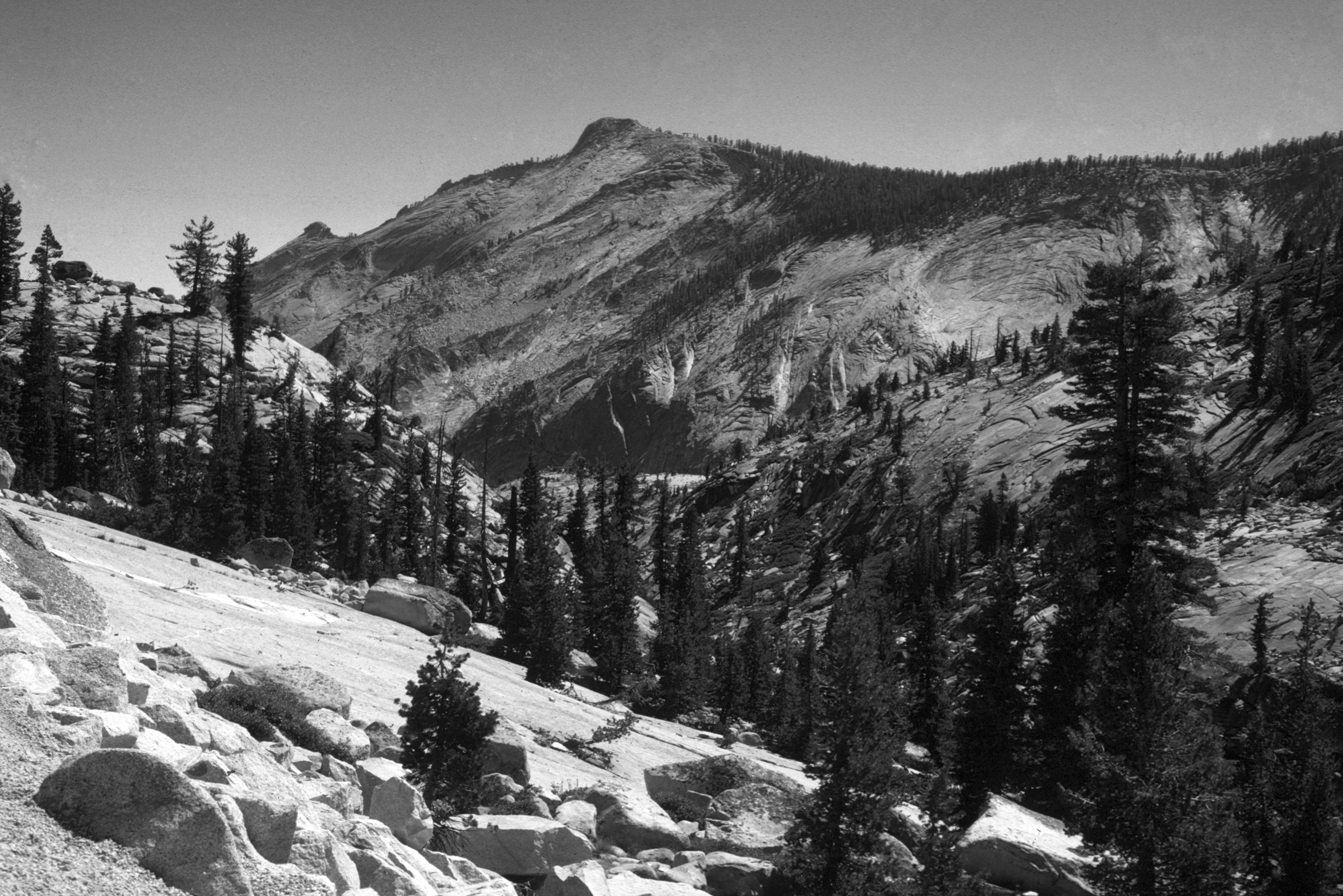
4.2.3. Nature as home
Muir frequently employed the term "home" as a metaphor for both nature and his overall attitude toward the "natural world itself." He often used domestic language to describe his scientific observations, as when he viewed nature as providing a home for even the smallest plant life: "the little purple plant, tended by its Maker, closed its petals, crouched low in its crevice of a home, and enjoyed the storm in safety." Muir also regarded nature as his own home, as evidenced when he wrote to friends describing the Sierra Nevada as "God's mountain mansion." His sense of closeness extended beyond just the mountains to even the smallest objects: "The very stones seem talkative, sympathetic, brotherly. No wonder when we consider that we all have the same Father and Mother."
In his later years, he consistently used the metaphor of nature as home in his writings to promote wilderness preservation. Unsurprisingly, Muir's deep-seated conviction that nature was his true home created a certain tension with his family life at his residence in Martinez, California. He once told a visitor to his ranch there, "This is a good place to be housed in during stormy weather,... to write in, and to raise children in, but it is not my home. Up there," he said, pointing towards the Sierra Nevada, "is my home."
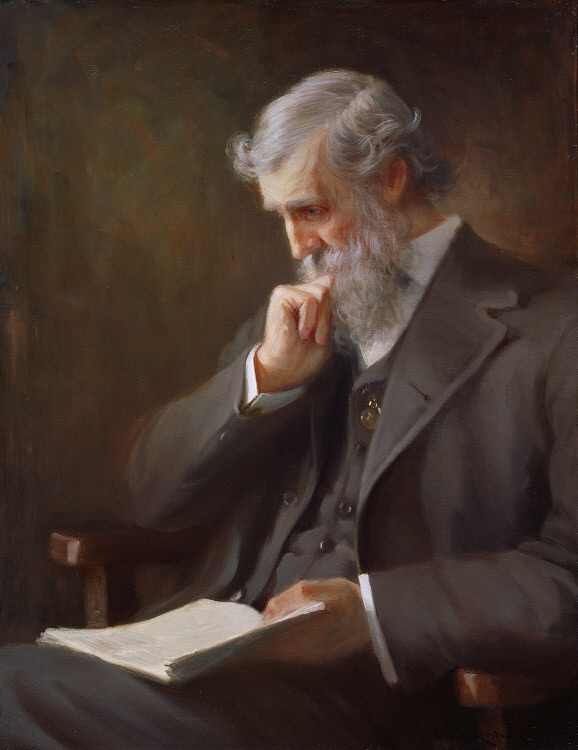
4.2.4. Attitudes towards Native Americans and African Americans
John Muir expressed complex and evolving attitudes towards Native Americans and African Americans throughout his life, reflecting the prevailing societal views of his time while also demonstrating a capacity for growth and advocacy for equality.
Muir's views on Native Americans ranged from initial sympathy to occasional distaste. He often idealized nature as being free from human influence, including that of Native Americans, failing to fully recognize that the landscapes he cherished had been shaped by Indigenous peoples for millennia, often through practices like deliberately-set fires to manage understory growth. His earliest encounters, during his childhood in Wisconsin, were with Winnebago Indians, who he observed begging for food and who stole his favorite horse. Despite this negative experience, he expressed sympathy for their plight, noting their "being robbed of their lands and pushed ruthlessly back into narrower and narrower limits by alien races who were cutting off their means of livelihood." However, his early encounters with the Paiute in California left him feeling ambivalent after observing their lifestyle, which he described as "lazy" and "superstitious." Muir also wrote of the Miwoks in Yosemite as "most ugly, and some of them altogether hideous" and that "they seemed to have no right place in the landscape, and I was glad to see them fading out of sight down the pass." Ecofeminist philosopher Carolyn Merchant has criticized Muir for his disparaging remarks about the Native Americans he encountered in his early explorations. However, later in his life, after living with Indigenous peoples, Muir grew more respectful and praised their low impact on the wilderness, contrasting it with the heavy impact of European Americans. Despite this, his journals still occasionally describe those he encountered as "dirty," "irregular," and "unnatural." He was given the Stickeen (a coastal tribe, Muir's spelling) name "Ancoutahan," meaning "adopted chief." In 2020, Chad Hanson, a national Board member of the Sierra Club, stated that Muir "wrote repeatedly about the intelligence and dignity of Native Americans, and honored how traditional Indigenous peoples lived in peaceful coexistence with Nature and wild creatures, expressing his view that Native peoples 'rank above' white settlers, who he increasingly described as selfish, base, and lacking honor." Hanson noted that this critique of the dominant white culture's destructive and greedy ways, and its anthropocentric mindset, became a constant theme in Muir's later writings.
Regarding African Americans, Muir spoke and wrote about the equality of all people, "regardless of color, or race," and condemned the immorality of slavery in his final book, Travels in Alaska. During his time in Alaska, he wrote about how "we were all children of one father; sketched the characteristics of the different races of mankind, showing that no matter how far apart their countries were, how they differed in color, size, language, etc. and no matter how different and how various the ways in which they got a living, that the white man and all the people of the world were essentially alike, that we all had ten fingers and toes and our bodies were the same, whether white, brown, black or different colors, and speak different languages." However, in his earlier years, Muir did make some disparaging remarks. In A Thousand-Mile Walk to the Gulf, he described African Americans as "well trained" but "making a great deal of noise and doing little work. One energetic white man, working with a will, would easily pick as much cotton as half a dozen Sambos and Sallies." Describing the sight of two African Americans at a campfire, he wrote, "I could see their ivory gleaming from the great lips, and their smooth cheeks flashing off light as if made of glass. Seen anywhere but in the South, the glossy pair would have been taken for twin devils, but here it was only a Negro and his wife at their supper." Despite these comments, Muir did not support or empathize with the Southern cause during his journey, avoiding entreaties from Southern hosts who tried to sway him.
In 2020, in light of the movement to remove Confederate monuments across the country, Michael Brune, then executive director of the Sierra Club, reflected on Muir's complex and controversial legacy. He announced that the club would shift towards investing in racial justice work and reassess which of its monuments might need renaming or removal. Brune stated that Muir "was not immune to the racism peddled by many in the early conservation movement. He made derogatory comments about Black people and Indigenous peoples that drew on deeply harmful racist stereotypes, though his views evolved later in his life. As the most iconic figure in Sierra Club history, Muir's words and actions carry an especially heavy weight. They continue to hurt and alienate Indigenous people and people of color who come into contact with the Sierra Club." Some of Muir's associates cited by Brune, such as Joseph LeConte, David Starr Jordan, and Henry Fairfield Osborn, were closely connected to the early eugenics movement in the United States. However, some scholars and advocates claim Muir himself did not espouse such beliefs. Aaron Mair, who in 2015 became the first Black president of the Sierra Club board, criticized Brune's post as a "misrepresentation," "revisionist," and "ahistorical" account, noting that Brune had not consulted him or the other two Black board members before publishing. Mair, along with Chad Hanson and Mary Ann Nelson, wrote a response to Brune's critique, asserting that while some of Muir's colleagues promoted White supremacist myths and exclusionary views, Muir "spoke out about the importance of making these areas accessible and encouraging all people to experience them," writing, "Few are altogether deaf to the preaching of pine trees. Their sermons on the mountains go to our hearts; and if people in general could be got into the woods, even for once, to hear the trees speak for themselves, all difficulties in the way of forest preservation would vanish." They added that Muir "came to believe deeply in the equality of all people, writing, "We all flow from one fountain Soul. All are expressions of one Love. God does not appear, and flow out, only from narrow chinks and round bored wells here and there in favored races and places."
5. Personal Life
Beyond his public image as a wilderness advocate, John Muir's personal life involved a marriage and family, and a constant negotiation between his domestic responsibilities and his profound passion for the wild.
5.1. Marriage and Family
In 1878, as he approached the age of 40, Muir's friends "pressured him to return to society." Soon after his return to the Oakland area, he was introduced by Jeanne Carr to Louisa Strentzel, the daughter of a prominent physician and horticulturist who owned a 2.6 K acre (2.60 K acre) fruit orchard in Martinez, California, northeast of Oakland. In 1880, following his return from a trip to Alaska, Muir and Strentzel were married. John Muir then entered into a partnership with his father-in-law, John Strentzel, and for a decade, he dedicated most of his energy to managing this large fruit farm.
Although Muir was a loyal and dedicated husband and father to his two daughters, Wanda Muir Hanna and Helen Muir Funk, "his heart remained wild." His wife understood his inherent restlessness, and upon observing his discomfort at the ranch, would sometimes "shoo him back up" to the mountains. He occasionally took his daughters with him on these trips.
The house and a portion of the ranch are now preserved as the John Muir National Historic Site. The park's museum collection includes historical documents and artifacts related to John Muir's writings, travels, political activities, and the daily life of his family in Martinez. Additionally, the W.H.C. Folsom House, where Muir worked as a printer, is listed on the National Register of Historic Places. John Muir became a naturalized citizen of the United States in 1903.
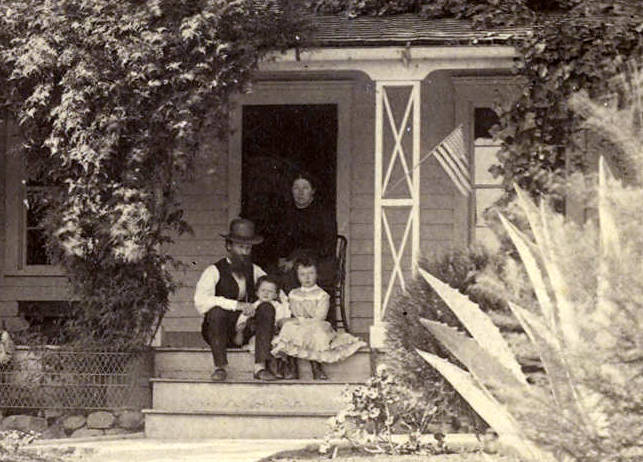
6. Death
John Muir died at the age of 76, on December 24, 1914, at California Hospital in Los Angeles. The cause of his death was pneumonia. He had been in Daggett, California, to visit his daughter, Helen Muir Funk. His grandson, Ross Hanna, lived until 2014, dying at the age of 91.
7. Legacy
John Muir's life and work left an indelible mark on environmentalism, conservation, and American culture, establishing him as a pioneering figure whose influence continues to resonate today.
7.1. Environmental Impact
During his lifetime, John Muir published over 300 articles and 12 books. He co-founded the Sierra Club, an organization that continued to play a crucial role in establishing numerous national parks after his death and today boasts over 2.4 M members. Muir has been hailed as the "patron saint of the American wilderness" and its "archetypal free spirit." Nature writer Gretel Ehrlich remarked that "As a dreamer and activist, his eloquent words changed the way Americans saw their mountains, forests, seashores, and deserts." He not only spearheaded efforts to protect forest areas and advocate for their designation as national parks, but his writings also fostered a perspective that viewed "human culture and wild nature as one of humility and respect for all life."
Robert Underwood Johnson, the editor of Century Magazine-which published many of Muir's articles-stated that Muir profoundly influenced people's appreciation of nature and national parks, a legacy that endures: "The world will look back to the time we live in and remember the voice of one crying in the wilderness and bless the name of John Muir... He sung the glory of nature like another Psalmist, and, as a true artist, was unashamed of his emotions. His countrymen owe him gratitude as the pioneer of our system of national parks... Muir's writings and enthusiasm were the chief forces that inspired the movement. All the other torches were lighted from his."
Muir exalted wild nature above human culture and civilization, believing that all life was sacred. Frederick Turner described him as "a man who in his singular way rediscovered America... an American pioneer, an American hero." According to Thurman Wilkins, the primary aim of Muir's nature philosophy was to challenge mankind's "enormous conceit." In doing so, he transcended the Transcendentalism of Ralph Waldo Emerson to embrace a "biocentric perspective on the world." He achieved this by portraying the natural world as "a conductor of divinity," and his writings frequently made nature synonymous with God. His friend, Henry Fairfield Osborn, observed that as a result of his religious upbringing, Muir retained "this belief, which is so strongly expressed in the Old Testament, that all the works of nature are directly the work of God." In the opinion of Enos Mills, a contemporary who established Rocky Mountain National Park, Muir's writings were "likely to be the most influential force in this century."
Since 1970, the University of the Pacific has housed the largest collection of Muir's personal papers, including his travel journals and notebooks, manuscripts, correspondence, and personal library. In 2019, the university was granted full ownership of the Muir collection, which has expanded over the years. The university also features a John Muir Center for Environmental Studies, the Muir Experience, and other programs related to Muir and his work.
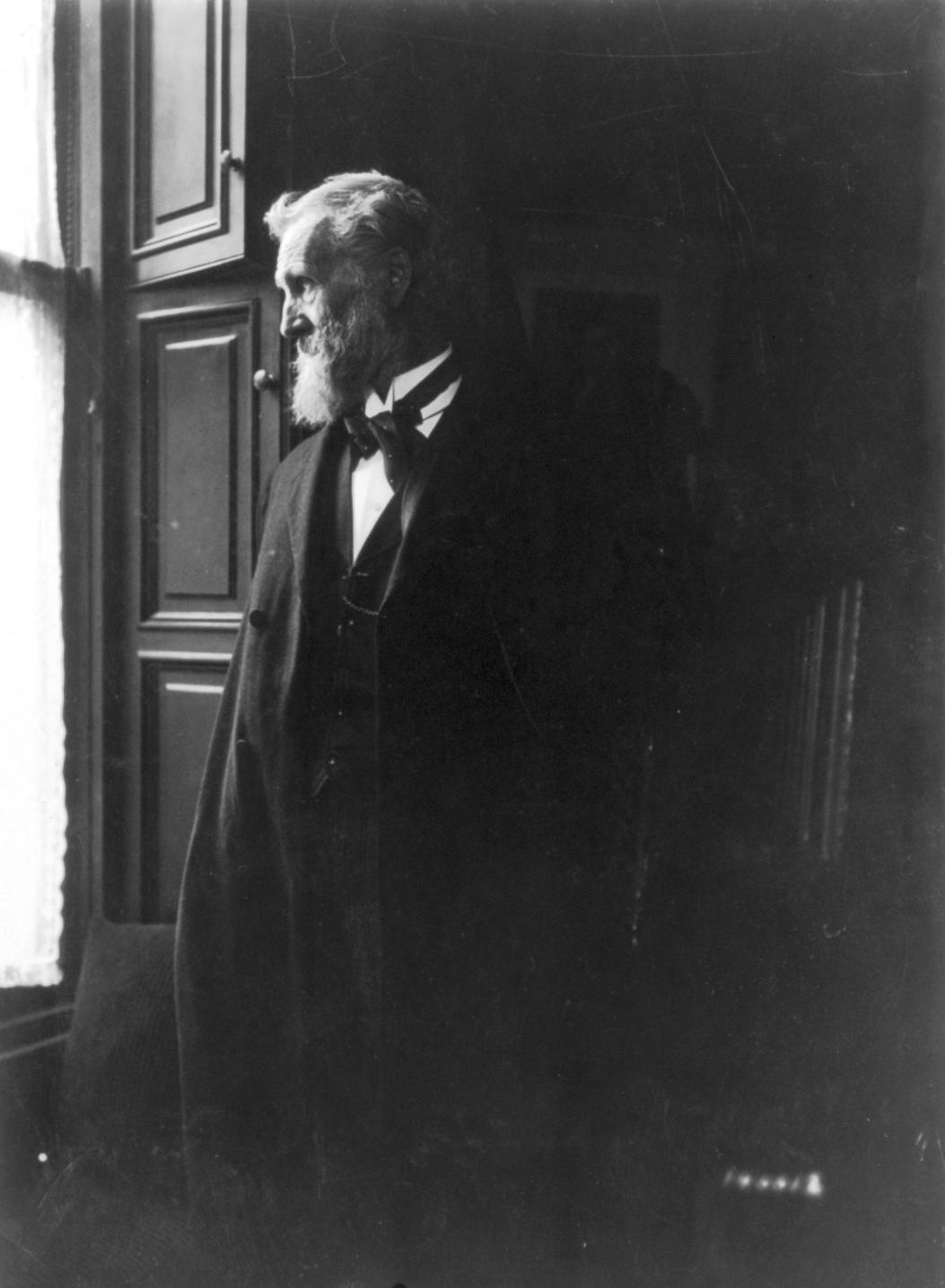
7.2. Social and Cultural Impact
John Muir's work on the Sierra Nevada mountains, including his discovery of the deep involvement of glacial action in shaping the terrain, solidified his reputation as a keen observer and scientist. During the Western Expansion era, when the California Gold Rush led to a rapid population increase on the West Coast, people turned their attention to the rich forests and abundant water of the Sierra Nevada for development, including logging and dam construction. Muir vehemently opposed these plans, dedicating his life to protecting the Sierra Nevada wilderness, earning him the title "Father of Nature Conservation."
The John Muir Trail, a 211 mile hiking trail originating from Yosemite Valley, is named in his honor. President Theodore Roosevelt was deeply moved by Muir's passion, which helped establish the concept of National Parks that continues to this day. Muir believed that "nature conservation begins with knowing nature." He frequently invited people into the forests, conducting nature classes to allow them to experience its wonders firsthand, advocating for "coexistence between nature and humans."
7.3. Criticism and Controversy
Despite his monumental contributions to conservation, John Muir's legacy has faced contemporary critiques, particularly concerning his views on race and Indigenous peoples, leading to an ongoing re-evaluation of his contributions.
Muir expressed complex and at times contradictory attitudes towards Native Americans. While he idealized nature as free from human influence, he often failed to acknowledge that the landscapes he admired had been shaped by Indigenous peoples for millennia, for instance, through the deliberate use of fire to manage undergrowth. Early encounters with Native Americans in Wisconsin and California led to some disparaging remarks, such as describing the Miwoks in Yosemite as "most ugly, and some of them altogether hideous" and expressing a desire to see them "fading out of sight." However, his views evolved, and after living with Indigenous communities, he grew to respect their minimal impact on the wilderness, contrasting it sharply with the destructive practices of European Americans.
Similarly, Muir's early writings contained problematic comments about African Americans, including observations in A Thousand-Mile Walk to the Gulf that described them using derogatory terms and stereotypes. Yet, in his later work, Travels in Alaska, he explicitly wrote about the immorality of slavery and advocated for the equality of all people "regardless of color, or race," emphasizing that all humanity flows "from one fountain Soul."
In 2020, in the context of broader discussions about racial justice and historical monuments, Michael Brune, then executive director of the Sierra Club, addressed Muir's complex legacy. Brune acknowledged that Muir "was not immune to the racism peddled by many in the early conservation movement" and that his derogatory comments "continue to hurt and alienate Indigenous people and and people of color." He also noted that some of Muir's associates were connected to the early eugenics movement. This statement prompted an internal debate within the Sierra Club, with some board members, including the first Black president of the Sierra Club, Aaron Mair, criticizing Brune's post as a "misrepresentation," "revisionist," and "ahistorical" account, noting that Brune had not consulted him or the other two Black board members before publishing. Mair, along with Chad Hanson and Mary Ann Nelson, wrote a response to Brune's critique, asserting that while some of Muir's colleagues promoted White supremacist myths and exclusionary views, Muir "spoke out about the importance of making these areas accessible and encouraging all people to experience them," writing, "Few are altogether deaf to the preaching of pine trees. Their sermons on the mountains go to our hearts; and if people in general could be got into the woods, even for once, to hear the trees speak for themselves, all difficulties in the way of forest preservation would vanish." They added that Muir "came to believe deeply in the equality of all people, writing, "We all flow from one fountain Soul. All are expressions of one Love. God does not appear, and flow out, only from narrow chinks and round bored wells here and there in favored races and places."
8. Tributes and Honors
John Muir has been widely commemorated through various tributes and honors, reflecting his enduring impact on environmentalism and American culture.
8.1. Places and Institutions Named
California celebrates John Muir Day annually on April 21, his birthday. Muir was the first individual to be honored with a California commemorative day when legislation was signed in 1988, effective from 1989 onward. He is one of only three people so honored in California, alongside Harvey Milk Day and Ronald Reagan Day.
Numerous geographical features, parks, trails, and institutions have been named in his honor:
- Mount Muir in the Sierra Nevada, California
- Mount Muir in the Chugach Mountains of Alaska (probable)
- Mount Muir (elevation 4.69 K ft) in Angeles National Forest north of Pasadena, California
- Black Butte, also known as Muir's Peak, next to Mount Shasta, California
- Muir Glacier and Muir Inlet, Alaska
- John Muir Trails in California, Tennessee, Connecticut, and Wisconsin
- John Muir Wilderness (southern and central Sierra Nevada)
- Muir Pass in Sequoia and Kings Canyon National Parks, the divide at 11.96 K ft above sea level, between Evolution Creek and the Middle Fork of Kings River
- John Muir Health hospital network in Walnut Creek, California
- Muir Woods National Monument just north of San Francisco, California
- John Muir National Historic Site in Martinez, California
- Camp Muir in Mount Rainier National Park
- John Muir College, the second established of the eight undergraduate colleges of University of California, San Diego
- John Muir High School, an Early College Magnet in Pasadena, California
- John Muir Elementary School, an elementary school in San Jose, California
- John Muir Highway, a section of California State Route 132 between Coulterville and Smith Station at California State Route 120. This road roughly follows part of the route Muir took on his first walk to Yosemite.
- The main-belt asteroid 128523 Johnmuir
- John Muir Country Park, East Lothian, Scotland
- John Muir Way long-distance trail in southern Scotland
- John Muir House, the headquarters building of East Lothian Council, Scotland
- John Muir Campus, Dunbar, one of two campuses of Dunbar Primary School, the successor to the school Muir attended
- Muir Woods, also known as John Muir Park, in Madison, Wisconsin, was designed by G. William Longenecker and Richard E Tipple from the University of Wisconsin Landscape Architecture Department. Its official dedication took place on February 8, 1964, with ceremonies at the State Historical Society of Wisconsin headquarters building, including the unveiling of a John Muir commemorative stamp.
- Muir Valley, a privately owned nature preserve and rock climbing area in the Red River Gorge area of Kentucky. The Valley spans approximately 400 acre (400 acre) and is walled by over seven miles of majestic Corbin Sandstone cliffs. The owners, Rick and Liz Weber, named it "Muir Valley" to honor John Muir's memory.
- The mineral Muirite, and several species of plants and animals, including Erigeron muirii, Carlquistia muirii (two species of aster), Ivesia muirii (a member of the rose family), Troglodytes troglodytes muiri (a wren), Ochotona princeps muiri (a pika), Thecla muirii (a butterfly), Calamagrostis muiriana (a Sierra Nevada subalpine-alpine grass), and Amplaria muiri (a millipede), were all named after John Muir.
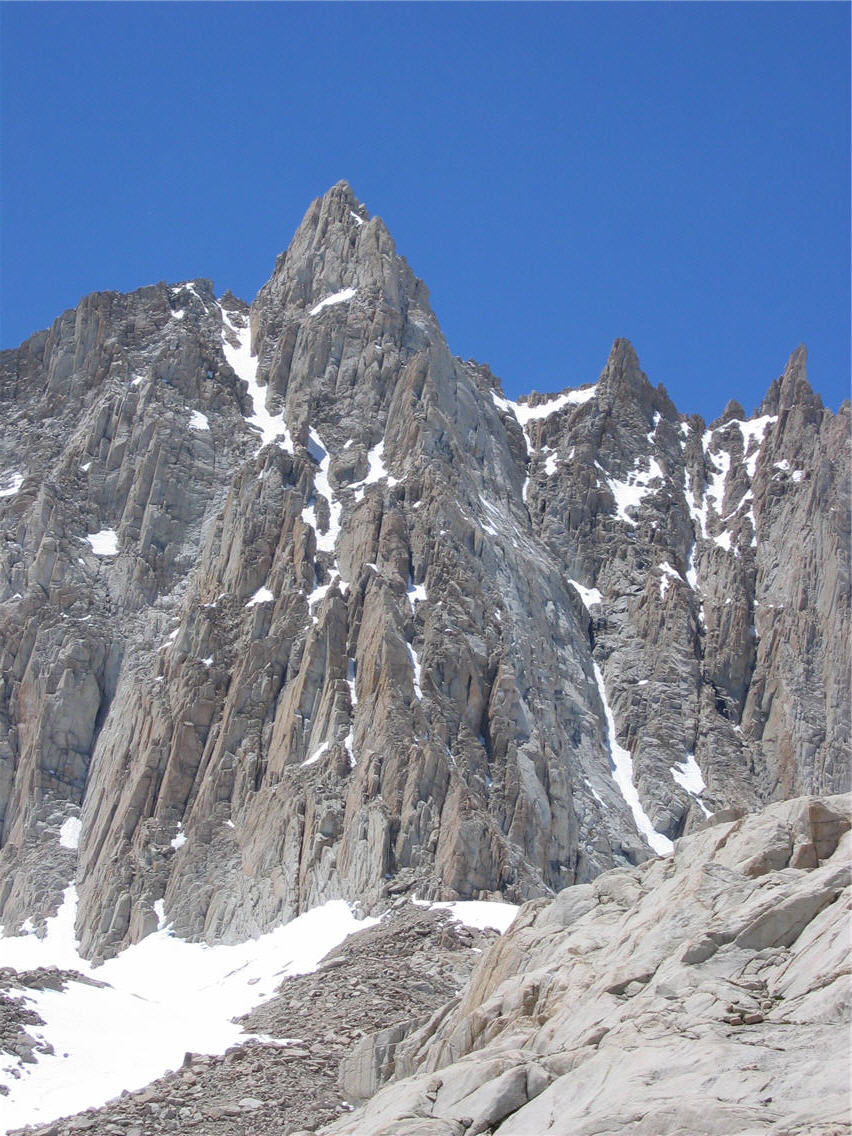
8.2. Artistic and Cultural Commemorations
John Muir has been featured on two US commemorative postage stamps. A 5-cent stamp issued on April 29, 1964, designed by Rudolph Wendelin, depicted Muir's face superimposed on a grove of redwood trees, with the inscription, "John Muir Conservationist." A 32-cent stamp issued on February 3, 1998, as part of the "Celebrate the Century" series, showed Muir in Yosemite Valley, with the inscription "John Muir, Preservationist." An image of Muir, alongside the California condor and Half Dome, appears on the California state quarter released in 2005. A quotation of his also appears on the reverse side of the Indianapolis Prize Lilly Medal for conservation. On December 6, 2006, California Governor Arnold Schwarzenegger and First Lady Maria Shriver inducted John Muir into the California Hall of Fame located at The California Museum for History, Women, and the Arts.
Mountain Days, a 2000 musical by Craig Bohmler and Mary Bracken Phillips, celebrates Muir's life and was performed annually in a custom-built amphitheater in Muir's adult hometown of Martinez, California. The play Thank God for John Muir, by Andrew Dallmeyer, is also based on his life.
The John Muir Trust is a Scottish charity established in 1983 as a membership organization dedicated to conserving wild land and wild places, with over 11 K members internationally. The John Muir Birthplace Charitable Trust is another Scottish charity focused on supporting Muir's birthplace in Dunbar, which opened in 2003 as an interpretive center highlighting his work. A statue of Muir as a boy, created by the Ukrainian sculptor Valentin Znoba, was unveiled outside the house in 1997. In 2006, he was inducted into the Hall of Great Westerners of the National Cowboy & Western Heritage Museum.
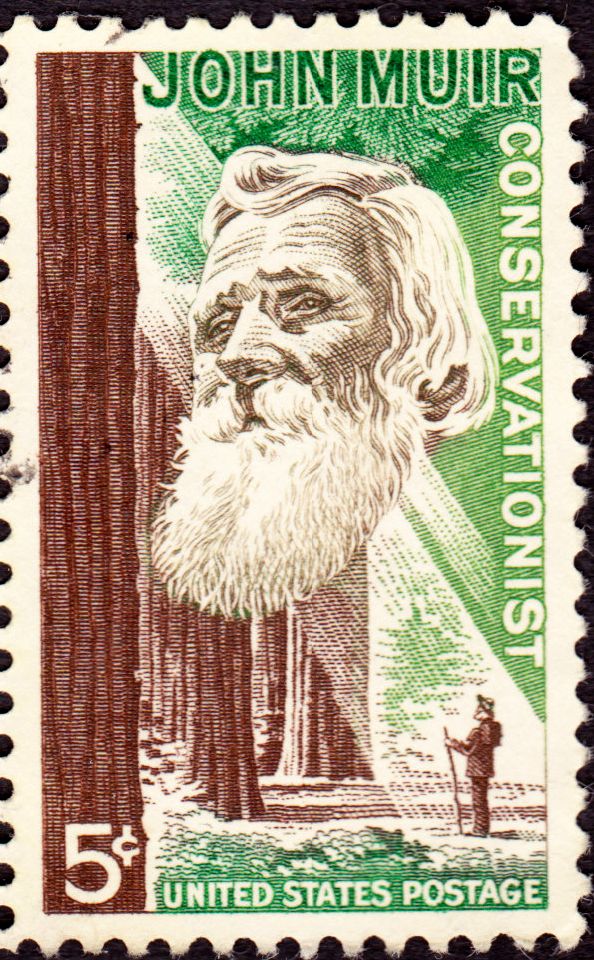
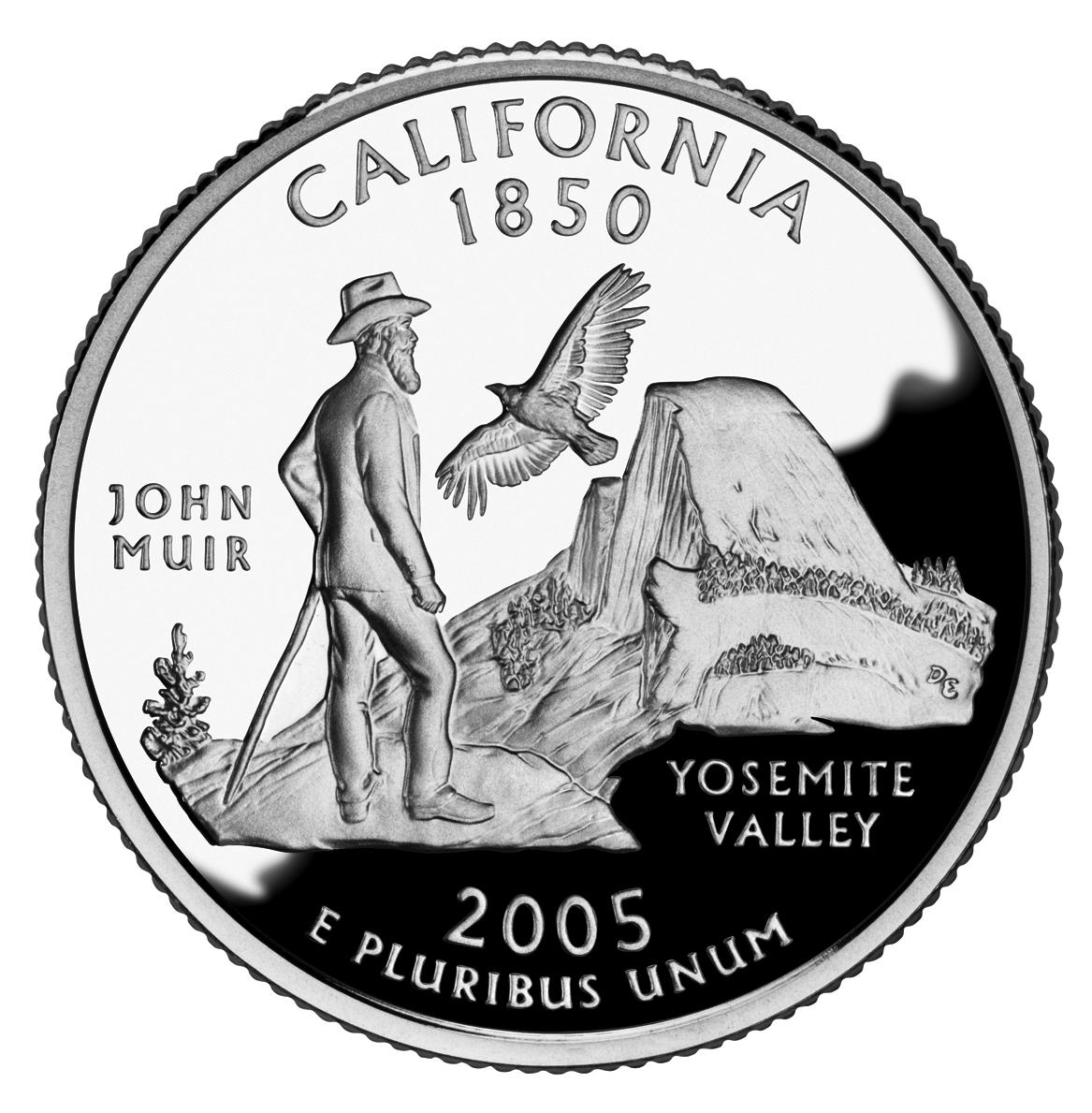
9. Works
John Muir was a prolific writer whose works captivated readers and significantly contributed to the environmental movement. His literary output includes numerous books and essays, many of which are still widely read today.
9.1. Books
- A Thousand-Mile Walk to the Gulf (1916)
- Edward Henry Harriman (1911)
- John Muir: His Life and Letters and Other Writings (1996)
- John Muir: Spiritual Writings (2013)
- Letters to a Friend: Written to Mrs. Ezra S. Carr, 1866-1879 (1915)
- My First Summer in the Sierra (1911)
- Our National Parks (1901)
- Picturesque California: The Rocky Mountains and the Pacific Slope; California, Oregon, Nevada, Washington, Alaska, Montana, Idaho, Arizona, Colorado, Utah, Wyoming, Etc (1888)
- Steep Trails (1918)
- Stickeen - John Muir's Adventure with a Dog and a Glacier (1909)
- Studies in the Sierra (1950, a reprint of serials from 1874)
- The Cruise of the Corwin (1917)
- The Mountains of California (1894)
- The Story of My Boyhood and Youth (1913)
- The Yosemite (1912)
- Travels in Alaska (1915)
9.2. Essays online
- "Alaska. The Discovery of Glacier Bay"
- "The American Forests"
- "Among the Animals of the Yosemite"
- "Among the Birds of the Yosemite"
- "The Coniferous Forests of the Sierra Nevada"
- "Features of the Proposed Yosemite National Park"
- "The Forests of Yosemite Park"
- "Fountains and Streams of the Yosemite"
- "In the Heart of the California Alps"
- "Living Glaciers of California"
- "The New Sequoia Forests of California"
- "A Rival of the Yosemite, King's River Canyon"
- "Snow-Storm on Mount Shasta"
- "Studies in the Sierra: The Glacier Meadows of the Sierra"
- "Studies in the Sierra: The Mountain Lakes of California"
- "Studies in the Sierra: The Passes of the Sierra"
- "The Treasures of the Yosemite"
- "The Wild Gardens of the Yosemite Park"
- "The Wild Parks and Forest Reservations of the West"
- "The Wild Sheep of the Sierra"
- "The Yellowstone National Park"
- "The Yosemite National Park"